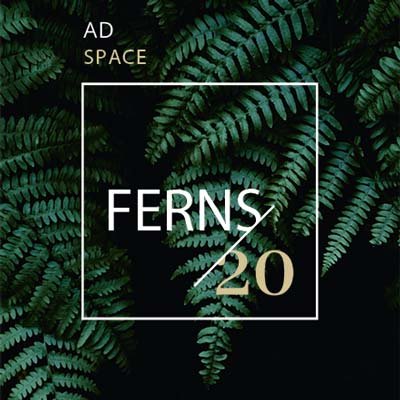Understanding Versatility in Fashion
Versatility in fashion refers to the ability of clothing items to adapt to various occasions, environments, and style preferences. It encompasses the concept of creating looks that can transition seamlessly from day to night, formal to casual, or work to play. This adaptability is essential for any wardrobe as it promotes a more functional and cohesive collection of clothing. By incorporating versatile pieces, individuals can effortlessly mix and match attire, saving both time and energy while dressing.
The significance of having versatile looks lies in their convenience and practicality. For instance, a well-tailored blazer can be worn over a casual t-shirt and jeans for a more relaxed outing, or it can be layered with a blouse and tailored trousers for a professional setting. This fluidity in dressing not only allows for a more dynamic style but also maximizes the use of each garment, making it a wise investment. When selecting versatile pieces, one should consider several key characteristics, such as neutral colors, classic cuts, and blendable fabrics.
Neutral colors, such as black, white, gray, and beige, are essential for creating versatile outfits, as they complement various hues and patterns. Classic cuts ensure that the clothing remains timeless and appropriate across different settings, allowing one to maintain a polished appearance regardless of the occasion. Additionally, blendable fabrics contribute to versatility by offering comfort and style, allowing for easy layering and combination with other pieces.
In summary, understanding versatility in fashion enables individuals to curate wardrobes that promote creativity while remaining functional. By focusing on key characteristics such as neutral tones, timeless designs, and adaptable fabrics, one can build a collection that serves diverse needs and occasions, ultimately enhancing their personal style.
Tip 1-5: Essential Styling Techniques
Creating versatile looks requires an understanding of essential styling techniques that can elevate your wardrobe. Here are the first five tips from fashion gurus to help you explore and enhance your personal style.
Tip 1: Invest in Quality Staples – Quality staples form the foundation of a versatile wardrobe. Items like a well-fitted blazer, basic tees, and classic trousers can serve multiple purposes. A tailored blazer, for instance, can be paired with everything from denim to dresses, instantly upgrading your outfit.
Tip 2: Master the Art of Layering – Layering is an effective technique for creating depth in your looks. Start with a basic tee as a base layer, and add a lightweight sweater or open cardigan. For colder days, a stylish outer layer such as a trench coat can add sophistication. Keep colors complementary for a cohesive appearance.
Tip 3: Mix and Match Textures – Combining different textures can add interest to your outfit. For example, pairing a soft cotton tee with a leather skirt creates a dynamic contrast. Experiment with fabrics such as silk, wool, and denim to find combinations that work for your style while ensuring the overall look remains balanced.
Tip 4: Accessorize with Purpose – Accessories can transform a basic outfit into something special. Select a statement necklace or a bold pair of earrings to draw attention to your look. A versatile handbag can also serve as functional as well as fashionable, completing your outfit while providing ample storage.
Tip 5: Play with Proportions – The right proportions can enhance your silhouette. If wearing a loose-fitting top, counterbalance it with tailored trousers or a fitted skirt. Conversely, an oversized bottom can be complemented by a fitted top. Understanding how to manipulate proportions effectively can create flattering and visually appealing ensembles.
Tip 6: Balancing Proportions
One of the cornerstones of advanced styling is the ability to balance proportions effectively. This technique involves creating visual harmony by pairing different silhouettes. For example, if you choose a voluminous top, consider contrasting it with fitted bottoms or vice versa. The careful balancing of proportions not only creates a flattering outline but also ensures the outfit feels intentional. Utilizing this strategy effectively can enhance the overall aesthetic of an ensemble, making it both stylish and chic.
Tip 7: Playing with Textures
Incorporating various textures into your outfits can significantly elevate your styling game. Layering contrasting materials, such as silky blouses with structured jackets or denim with leather, adds depth and visual interest to your look. Mixing textures can create a dynamic appearance, allowing for a more polished and sophisticated outfit. Additional textures, such as knits or tweeds, provide warmth and richness, which can be particularly appealing during transitional seasons. Remember that the right mixture of textures can highlight different elements of your outfit, guiding the observer’s eye toward your desired focal points.
Tip 8: Selecting Statement Pieces
Every wardrobe can benefit from a few well-chosen statement pieces that serve as focal points of an outfit. These can range from bold jewelry to unique outerwear. When styling, it is essential to ensure the rest of the outfit complements the statement piece without overwhelming it. For instance, wear a striking necklace with a neutral outfit or choose patterned shoes that stand out against solid colors. The right statement piece can transform a basic look into something extraordinary, showcasing individuality and creating a memorable impression.
Tip 9: Embracing Color-Blocking
Color-blocking is a stylish technique that involves pairing solid colors in a way that creates a bold and captivating appearance. This strategy can define your aesthetic and add an element of fun to your wardrobe. Choose complementary or contrasting colors to create visual interest. For example, combining bright hues with softer tones can generate a balanced look that is vibrant yet sophisticated. When executed thoughtfully, color-blocking can refresh an outfit while allowing for personal expression and creativity.
Tip 10: Tailoring for Body Types
Understanding your body type is crucial in crafting outfits that not only fit well but also enhance your physique. Advanced styling encourages individuals to embrace their shapes by selecting garments that flatter rather than conform. For instance, those with an hourglass figure might opt for fitted dresses that cinch the waist, while individuals with a rectangular body shape might prefer belted styles to create curves. Tailoring clothes to fit your specific measurements can also dramatically improve the overall look, creating a polished and confident appearance that speaks to personal style.
Putting It All Together: Build Your Versatile Wardrobe
Building a versatile wardrobe requires a systematic approach that combines personal style with practical elements. Start by assessing your current wardrobe. This can be achieved by going through each piece of clothing and categorizing them based on wear frequency, fit, and how well they align with your desired style. Identify which items are staples and which ones can be classified as fillers. This initial evaluation is crucial as it will highlight gaps that need addressing.
Once you have a clear picture of your wardrobe, focus on versatile pieces that can be mixed and matched easily. Essential items such as a classic white shirt, tailored trousers, and a well-fitted blazer can serve as foundational pieces that allow for numerous combinations. Additionally, consider integrating various textures and colors that complement each other. This not only enhances visual interest but also maintains a cohesive vibe across different outfits.
As you build your versatile wardrobe, don’t forget to embrace your personal style. While it’s essential to incorporate basic pieces, consider adding unique items that reflect your individuality. This could mean including statement accessories or standout footwear that transforms a basic outfit into something special. Remember to factor in your lifestyle and the occasions for which you’ll be dressing. Create outfits that cater to both casual and formal settings to ensure you feel prepared for any situation.
To further guide your efforts, an interactive checklist can be immensely beneficial. This checklist should include categories like must-have items, seasonal pieces, and special occasion outfits. Visualization can also aid in the curation process; consider creating a lookbook or mood board that inspires you when planning outfits. By systematically implementing these strategies, you can successfully build a versatile wardrobe that resonates with your personal style while being practical.






